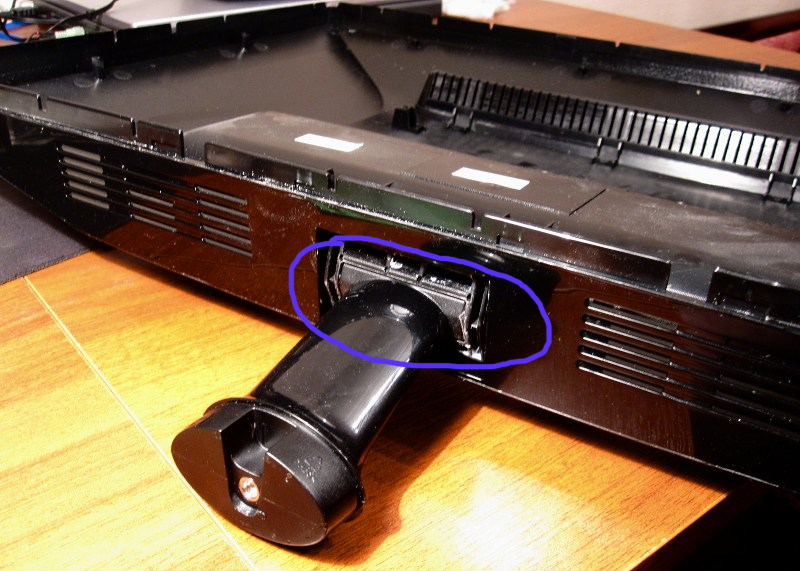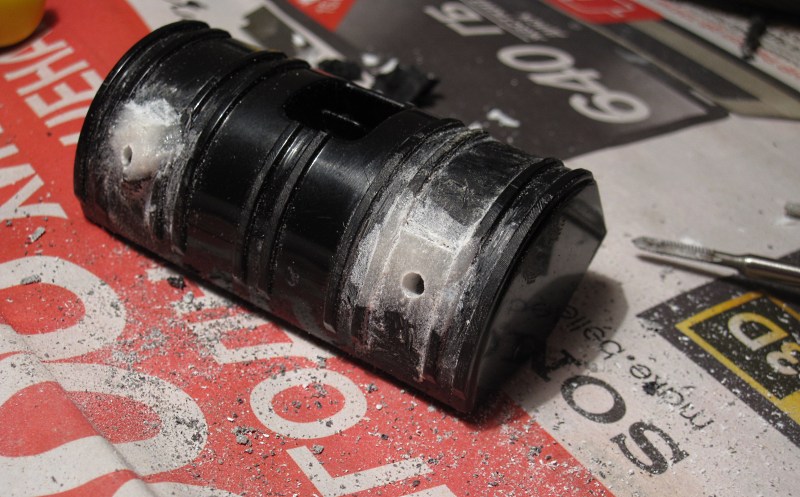Repair the monitor with soda!
Recently, it seems to me, plastic mines are on the verge of exhaustion. The larger and heavier the monitor, the smaller and thinner the stand. So 23 '' Samsung monitor suffered the fate of a dandelion. I stumbled upon, in one of the local news groups, a method of plastic recovery using baking soda. Under the cat repair monitor rack.
The inner sleeve (on which the monitor “drives” when tilted horizontally) has partially collapsed at the attachment point to the rack. I do not know what the idea of engineers was, but on 2 screws it holds almost 7 and a kilogram display.

Torn out with meat! For treatment, you need either a donor, or to fix the rack “firmly”, or to grind something somewhere. Epoxy will not take, as it is plastic.

')
The pieces are simply thrown away, they will only interfere with us and fill the damaged places with soda.

Wedrip Apply enough to wet the entire amount of soda cyanoacrylate in the people "superglue".
UPD Glue should not be a gel, but liquid “classic”. Polymerization occurs instantly, the mixture hardens completely in 2-3 seconds.

The “patch” is very durable, it is harder to grind than the original plastic. It remains to grind and drill holes for screws.

Everything!

This is what Wikipedia thinks about it:
The inner sleeve (on which the monitor “drives” when tilted horizontally) has partially collapsed at the attachment point to the rack. I do not know what the idea of engineers was, but on 2 screws it holds almost 7 and a kilogram display.

Torn out with meat! For treatment, you need either a donor, or to fix the rack “firmly”, or to grind something somewhere. Epoxy will not take, as it is plastic.

')
The pieces are simply thrown away, they will only interfere with us and fill the damaged places with soda.

We
UPD Glue should not be a gel, but liquid “classic”. Polymerization occurs instantly, the mixture hardens completely in 2-3 seconds.

The “patch” is very durable, it is harder to grind than the original plastic. It remains to grind and drill holes for screws.

Everything!

This is what Wikipedia thinks about it:
For working with cyanoacrylate in thick layers, an amateur method is known with successive filling of a seam with baking soda moistened with superglue and playing in this case the role of not only a filler, but also an alkaline polymerizing agent. The mixture hardens almost instantly, forming an acryl-like filled plastic, and in some cases can successfully replace epoxy compositions. You can also use finely milled plaster or concrete as a filler, for example, the dust obtained by drilling holes in such materials.
Source: https://habr.com/ru/post/144043/
All Articles